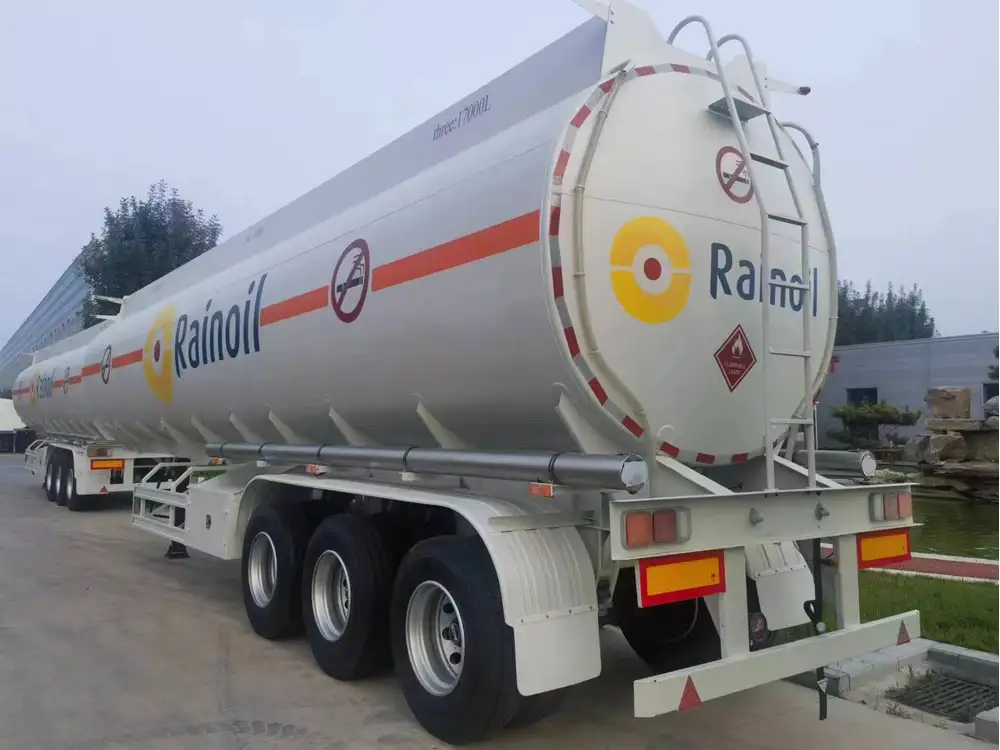Travel trailers are an essential companion for adventurers and families seeking the great outdoors. As one embarks on a journey, understanding the various components of a travel trailer becomes vital, particularly when it comes to waste management. One of the most critical features to grasp is the sewage tank’s capacity. This article aims to dissect the pertinent details regarding how much a 32-foot travel trailer sewage tank holds, influencing your travel plans and overall experience.
What Is a Sewage Tank?
A sewage tank, also known as a black water tank, is a key component in any travel trailer equipped with a plumbing system. It is designated to collect and store waste from the toilet, helping maintain sanitation and comfort during your travels. As it is an enclosed tank, monitoring its capacity is necessary to prevent overflow and potential hazards.
Sewage Tank Capacities by Trailer Size
Travel trailers come in various sizes, and typically, the size of the sewage tank correlates with the overall length and amenities of the trailer. The following table illustrates a general overview of what to expect from sewage tank capacities based on trailer sizes:
| Trailer Length | Average Sewage Tank Capacity |
|---|---|
| 20-25 feet | 20-30 gallons |
| 26-30 feet | 30-40 gallons |
| 31-35 feet | 40-50 gallons |
For a 32-foot travel trailer, the norm tends to be a sewage tank holding anywhere from 30 to 40 gallons, although specific models can exceed this average based on the design and facilities offered.

Factors Influencing Sewage Tank Size
Several factors come into play when determining the actual capacity of a sewage tank in a 32-foot travel trailer:
Design of the Trailer: Manufacturers may vary in their construction techniques. Up-market models might install larger sewage tanks to accommodate extra amenities like multiple bathrooms or kitchen sinks.
Type of Use: If you plan on going off-grid or extending your stays at campsites, a larger capacity would be more beneficial. Conversely, if you’re just using the trailer for short weekend getaways, a smaller tank may suffice.
Occupancy Levels: The number of people staying in the trailer directly affects how quickly the tank fills up. More bodies translate into more waste, which necessitates a larger tank.
Usage Patterns: Frequent use of the toilet and other water facilities can accelerate the filling of the sewage tank.
Appliance Configuration: Models with additional features like more than one bathroom, or enhanced kitchen facilities, may justify a larger sewage tank for user convenience.
How to Measure Your Travel Trailer’s Sewage Tank Capacity
Measuring the sewage tank capacity can be done in several ways. One of the most reliable methods to ascertain whether the tank meets your needs is observational. Here’s how to go about assessing your 32-foot travel trailer’s sewage tank:
Consult the Owner’s Manual: This definitive reference offers specific information about your model’s sewage tank size and operating instructions.
Manufacturer Specifications: Often, brands will publish detailed specs on their websites or on dealer sites.
Check Tank Markings: Some trailers have an external sight gauge or markings indicating the levels directly on the tank itself.
Utilize a Measuring Device: As a last resort, if safe and feasible, you can use a measuring device to determine the tank’s dimensions and calculate the volume.
Regular Maintenance of Sewage Tanks
To ensure that your sewage tank operates efficiently throughout your travels, regular maintenance is imperative. Here are several recommended practices to keep your tank in optimal condition:

1. Black Water Tank Treatment
Utilizing a suitable tank treatment is essential. These treatments help break down waste material, reduce odor, and prevent clogs. An array of options, including liquid and tablet forms, exists, so choose one that best suits your usage.
2. Leap Before You Empty
Knowing when to empty your sewage tank is crucial for avoiding overflows and maintaining good hygiene. Emptying should occur when the gauges indicate it’s about three-quarters full to prevent backflow issues.
3. Hose Inspection
Your sewage hose plays a vital role in draining waste. Regularly inspect your hose for leaks, cracks, or blockages. Consider having a backup hose on hand for emergencies.

4. Cleaning Routine
Once you’ve drained the tank, it’s advisable to flush it out using clean water. This helps eliminate residual waste and residues that could lead to unpleasant odors.
Responses to Common Concerns
When it comes to travel trailer sewage tanks, several questions and concerns often arise:
Is It Safe to Use My Sewage Tank?
Absolutely. As long as it’s regularly maintained and used according to the manufacturer’s guidelines, the sewage tank should operate safely and effectively.

What Happens if the Tank Overfills?
An overfilled tank can lead to leaks or backflow into your trailer, resulting in unsanitary conditions. The potential for serious damage and an unhygienic environment underscores the importance of keeping track of tank levels.
Can I Increase the Capacity?
While it’s challenging to change the factory-installed sewage tank, some custom options may be available. Consult with a professional to examine potential modifications that adhere to safety standards.
What Are the Best Practices for Disposal?
Only dispose of human waste and toilet paper in the sewage tank. Other items, including hygiene products, are prohibited, as they could lead to clogs.

Conclusion: Choosing the Right Travel Trailer for Your Needs
Understanding how much a 32-foot travel trailer sewage tank holds is essential for decision-making and logistics planning during your travels. It enables you to appreciate how to manage waste effectively and make informed choices about your camping lifestyle.
A well-maintained sewage tank system brings peace of mind and a sense of comfort, allowing you to enjoy the great outdoors fully. As you consider your next adventure, take the time to evaluate your trailer’s sewage tank capacity according to your needs and lifestyle. Factor in the design, anticipated usage levels, and suitable maintenance strategies to ensure your experiences are nothing short of remarkable.



